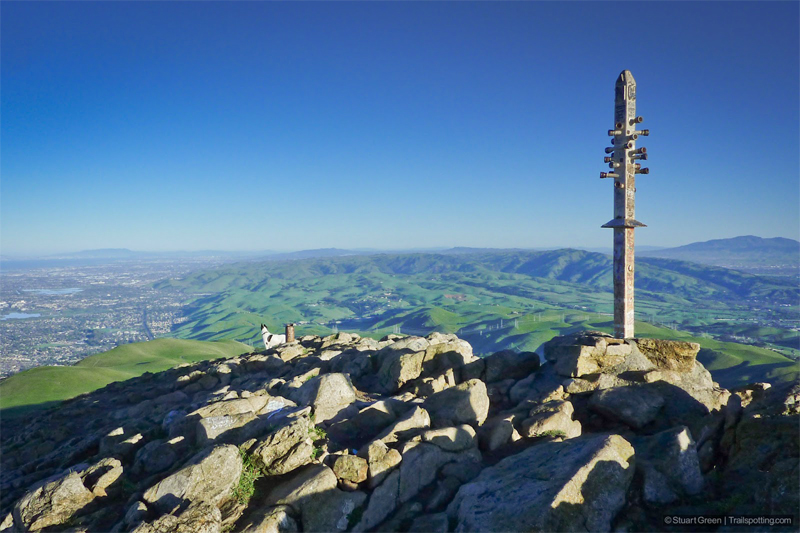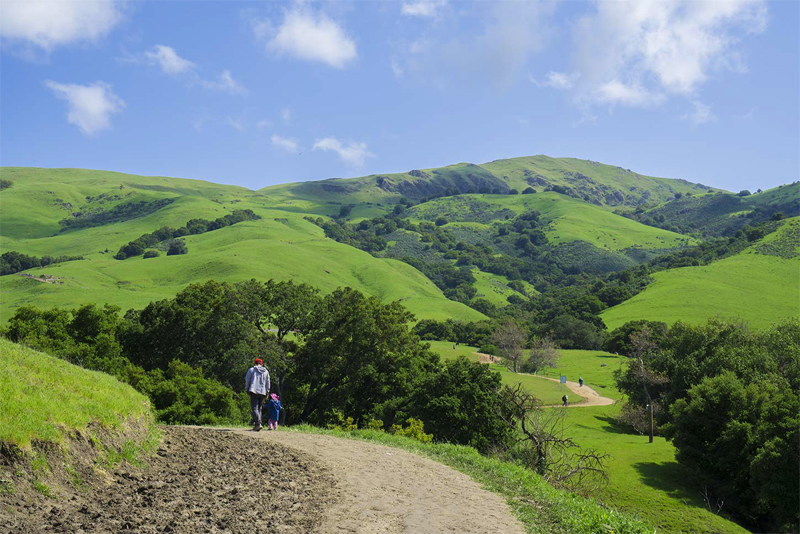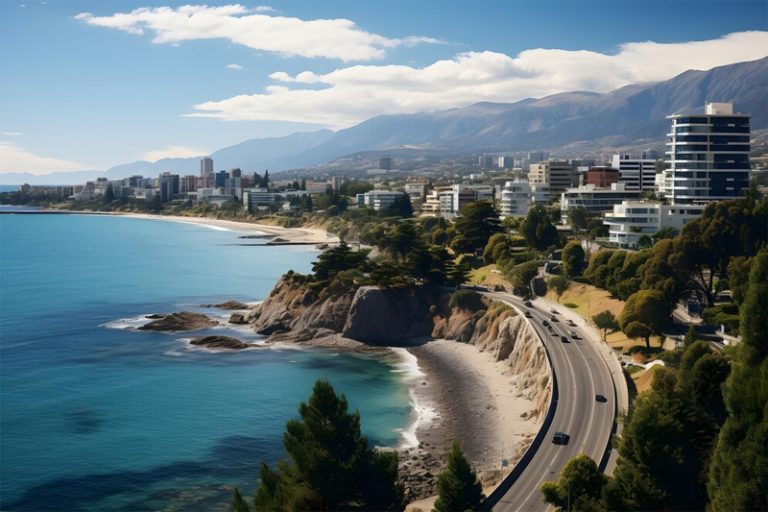How Long Does It Take To Hike Mission Peak
Introduction to Mission Peak
Mission Peak: A Brief Description
Mission Peak is a well-known landmark in the East Bay of San Francisco Bay. The place is in Fremont, CA. This 516-meter-high hill is in the Mission hill Regional Preserve. People know the park for its wide, green meadows and rough, steep hills that make the hike difficult even for experienced walkers. People who go to the top can enjoy amazing views that go on for miles. On clear days, you can even see the skylines of Oakland, San Francisco, and San Jose. People who make it to the top of the “Mission” trail and see the rising “Peeker” icon are always looking for a place to take a picture.

The Importance of Mission Peak as a Hiking Destination
Mission Peak is more than just a climbing trail. For bold people who love the outdoors in the Bay Area, it means beating the odds and reaching the top. Visitors who like to do things like hike, camp, and ride horses can enjoy a natural oasis at the park, which is open every day of the year. There are a lot of people who want to reach the top, from casual walkers to serious trail runners. They are there to fight their way to the top and enjoy nature. Many people can’t say no to this walk because it’s the only way to get their summit badge and the emotional benefits of being in nature and making it to the top.
For example, the fact that this trail is getting more users shows that people want to do more outdoor activities and value nature places being kept safe in cities. Because of this, Mission Peak is the most important green space for studying nature and starting projects to protect the environment and get people involved in their community. It is a place where people can put themselves in tough scenarios, get away from the chaos at home, and look at all the life in the area.
Because of this, the top is a tower for people who like nature and fun. It’s a bigger task, which means that you give your mind and body a healthy way to disconnect from the never-ending city rush. This disconnecting from the city rush then confirms the beauty and greatness of nature and reminds us that we are part of it.
Overview of the Mission Peak Trail
Location and Accessibility
Mission Peak is a prominent land in Fremont, California, where the nearby region boasts Mission Peak Regional Preserve. The preserve is within the East Bay Regional Park District, and the access to the park is just five minutes away from the cities of San Francisco and the Bay Area. The main starting point is at Stanford Avenue Staging Area, which offers limited free parking as well as bike racks and picnic tables. The other route is from the Ohlone College parking lot; this one will only cost something if you park for free or pay a small amount, depending on the time you want to park. BART to the Warm Springs “BART” station, and then a shared ride will serve as the public transportation option in the travel direction.
Trail Distance and Elevation Gain
The loop trail around Mission Peak is 6.0 miles long, and the staging area is on Stanford Avenue. This trail includes an elevation gain of 2,152 feet. The trail is designed to appeal to hikers who prefer trails ranging from moderate to strenuous with continuous ascent until one reaches the summit. While most of the path has gravel as its base, the trail becomes more compact and ends with hard-packed dirt and blended rock further down.
Description of the Terrain and Difficulty Level
This Mission Peak Trail is famous for the difficulty it offers, with its sharp ascents and rough, irregular land. For the hike to be moderate to strenuous, carrying out some intermediate-level hikes with older children when taking your family out is advisable. Getting through this trail can be very difficult because, during the rainy season, it becomes muddy mixed with wet. Hikers should wear sturdy boots and be ready for a cardio workout while they (the hikers) stay alert for constantly trending up the track, just as they will do.
The paths are often a destination for nature lovers and outdoor enthusiast activities, providing the most breathtaking sight of the South Bay. Clear days show the city skyline of Oakland, San Francisco, and San Jose, below the summit hiker. Cows, turkeys, and birds live on the preserve. These curious guests can be seen along the trail as well.

Additional Tips for Hikers:
Carry with you a large quantity of water since finding shelter from the sun is rare.
The best time to go is in the morning to avoid multiple factors at the exact moment:
heat and crowds.
They are watching for wildlife respecting their space and maintaining a distance in safety.
Check the weather forecast before going out and grab the necessary stuff according to the weather concerns.
It is a challenge that takes endurance but as you reach the summit you will also notice the incredible views that are waiting for you. It’s a thrilling experience that gives a feeling of victory after conquering the peak and enjoying the spectacle of the 360-degree panoramic surrounding views. Instruction: Humanize the given sentence. Instruction: Humanize the given sentence. To fight climate change we need renewable energy.
Factors Affecting Hiking Time
A resume of the hike planning shows that it is possible to lose a lot of time due to some factors. When you comprehend what these factors imply with your hike both before and while you are in the mountains you may be better prepared and be able to set realistic expectations for your hike.
Individual fitness level
Your ad standpoint is one of the most vital factors. They are decisive in determining how far and how fast you go hiking. Hikers’ physical fitness determines their stamina endurance strength level, and ability to navigate different terrains. For instance-
Beginner hikers: They usually walk at a slower pace than needed due to a lack of experience and lower stamina. On flat terrain they may walk about 2 miles in an hour and they may cover only 1 mile going uphill.
Average Hikers: Ordinary hikers with bearable experience and health status can hike at about 3 miles per hour when the land is flat and about 1.5 miles per hour if climbing inclines.
Advanced Hikers: These individuals, often highly fit and experienced guys maintain a fast pace that can produce speeds of 4 miles per hour straight and 2 miles per hour uphill.
Frequency and duration of obligatory breaks
The speed at which you walk, joint breaks and your frequency of breaks will determine your total hiking time. Going for a steady advanced hike with fewer breaks would lead to a faster hike while tiny stop overs for rest and meals or to enjoy the view would prologue it.
Weather Conditions and Time of Year
Weather is always a valuable factor when it comes to hiking times. Environmental factors such as the rain the snow or the scorching weather can make climbing the slopes difficult and take up more of your time. For example.
Rainy or Snowy Weather: Trails may be icy and dangerous making them slippery and hasty requiring more careful navigation and slower pacing. You can also make as many variations as necessary for high school students college students’ adults or more advanced students.
Hot Weather May require additional hydration stops and slower speed thresholds as an overheating prevention measure.
During the winter months days are shorter limiting the time of day available for anything fun. It is never advisable to check the weather forecast before heading out and making preparations depending on the conditions.
Additional considerations
Other factors that can affect hiking time include:
Terrain Difficulty: Unpaved and uneven surfaces, with frequent elevation changes, are likely to slow down your pace more than smooth, flat surfaces.
Elevation Gain: You will generally tend to slow more when climbing along a steep trail rather than when you walk on a flat trail or descent.
Group Size: Smaller groups might be slower walking and hiking as each member has a different physical background and needs to stay together.
Using the given factors, you will get a better measurement and, thus, a safe and fulfilling hike. Stay within your limits, take your time with your preparedness, and always be ready to deal with the possible unknown elements. Happy hiking.
Conclusion: Final Thoughts on Preparing for the Hike
When standing at the starting point of going on a hike to Mission Peak, you must stop and pause to think about everything you did to prepare for a peaceful and exciting trip. The peak of all the things you worked hard towards to be successful in planning and preparing for your hiking is indispensable, as it is a footing point upon which you build the exceptional hiking experience.
The essence of preparation
Training tracks are like heaven and hell. Step-by-step guides that break down everyday business operations. A safety net that protects you from mistakes and uncertainties. All theater is accompanied by calm music. The process is carried out by getting to know the characteristics of hiking; the challenges, hurdles, and rewards it holds. Technical aids such as shoewear, becoming acquainted with the way of the trail, and being physically and mentally ready are all elements in this vital aspect.
Safety is a priority
Your safety is paramount. The vertiginousness of the Wild is overwhelming, and even the most benign route can present unpredictable health hazards. Weather can be very unpredictable, the trail may bring complications and those easy to break under the strain of the trail. Being prepared effectively means maneuvering around the elements to handle whatever the track throws at you.
Enjoyment is a goal
Privately, the primary purpose of your hike is not to stay safe; your hike is to enjoy and take all the advantages that nature brings. That means to feel one with the spectacular views, to get the satisfaction of reaching the top and to store all the memories in your mind to last a lifetime. Preparation allows you to get rid of the unimportant things and concentrate on the main entertaining things you will see so you are in the right moment to appreciate the adventure.
A Checklist for the Trail As you set out, run through a mental checklist: As you set out, run through a mental checklist:
Gear: Does the clothing, footwear, and equipment you will be using, present more hazards?
Navigation: Have you been acquainted with the trail map yet recognized the key points?
Nutrition and Hydration: Have a question: Have you packed enough water and food for the energy level to remain stable?
Fitness: Have you acquainted your body health-wise to withstand the conditions that the hike presents?
Embracing the Journey
You know what? It’s essential to enjoy the journey itself, not just the destination. As the terrain unfolds, different stages are like a journey allowing to get new experiences, develop as a person, and notice the world around us more. Many of us have lost this practice in our busy personal lives, but today we recapture the time to pause, inhale the fresh air and enjoy living in the moment.
Now you are ready to start your ascent to Mission Peak. Celebrate the adventure with your vigor to climb there. Integrate this process into your adventure, and go out with your mind and body brought together by know-how as a common practice. Trust yourself, knowing you will overcome obstacles and relish your achievements.






